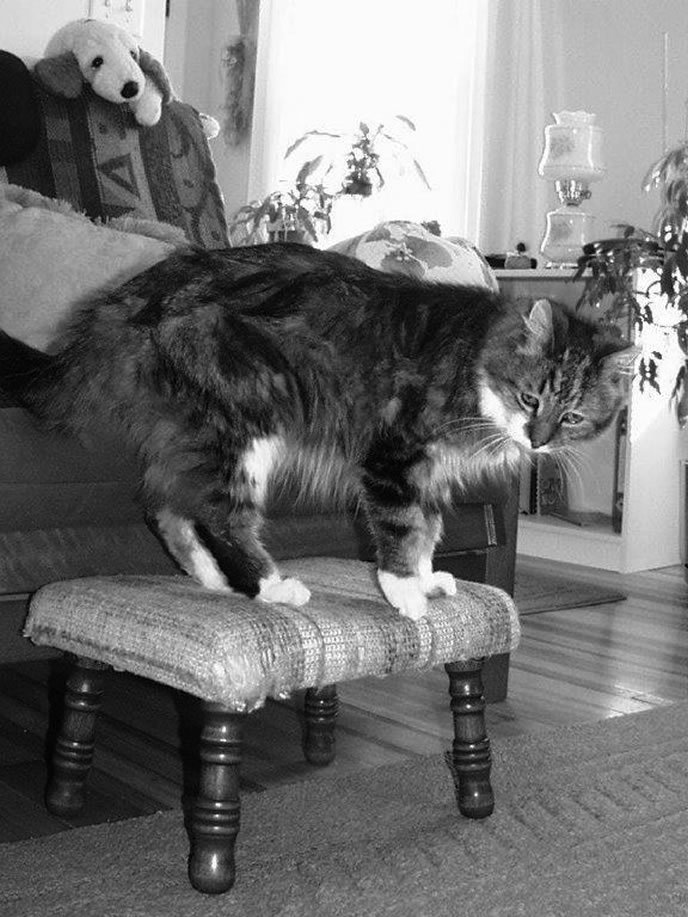Dr. Debra Givin

New Treatments for Pain: ‘It’s Not Just About Drugs’
Updated guidelines on pain management from the American Animal Hospital Association and the American Association of Feline Practitioners are primarily intended for private practice veterinarians. The guidelines’ information-packed 18 pages cover the latest research and experts’ consensus on medications, but cat owners can find practical help, too. Examples: advice for the home environment and a new emphasis on complementary therapy.
In the chapter on “It’s Not Just About Drugs,” the guidelines acknowledge the science behind numerically evaluating, or scoring, pain, advances in the field and classical veterinary education that emphasizes “treatment through pharmacology and surgery.”
However, they advocate that based on evidence and experience, what used to be considered alternative therapies be considered “mainstream options.” The list includes cold compression, therapeutic laser, weight management, exercise, acupuncture, physical rehabilitation and myofascial trigger point therapy for muscle and skeletal pain.
The guidelines unequivocally state that it should be assumed that senior cats have some degenerative joint disease (DJD), which includes osteoarthritis. They describe it as one of the most under-diagnosed diseases in cats.
The signs may not always be apparent to owners, the guidelines say:
– Reduced appetite
– Hunched posture with the head lowered
– Squinting or facial expression indicating discomfort
– Decline in grooming or over-grooming the painful area
– House soiling and decline in defecation
– Stiffness and decline in jumping
– Increased vocalization but decreased greetings
– Irritability and hissing if touched on the painful area
– Withdrawal and hiding or increased clinginess
– Aggression toward other cats or humans
Recommendations for making home life easier for a cat with DJD include providing a stool, ramp or step to allow him to reach favored areas; additional litter boxes with at least one low side to make access easier; and physical therapy through “play times using favorite toys to increase exercise and mobility.”
The 2015 guidelines are available at www.catvets.com/guidelines.
Say Goodbye to Bach
Scant research has been conducted — mostly in dogs — on the benefits of music therapy to calm animals. One frequently cited study showed that dogs prefer classical music over heavy metal. No surprise there.
Now research from the University of Wisconsin-Madison, reported in Applied Animal Behaviour Science, suggests that cats respond more favorably to music created specifically for them rather than to classical music. For the study, cellist and lecturer David Teie at the University of Maryland School of Music composed the two “cat songs” at a higher pitch than human music because cats vocalize an octave higher. The tempos that Teie used mimicked purring and the suckling sound of nursing.
When researchers played the sound samples for 47 cats in their homes, it took cats an average of 110 seconds to react to the cat songs, purring and rubbing against the speakers. It took longer — 171 seconds to respond favorably to Bach’s “Air on a G String” and Faur’s “Elegie.”
A sample of the composer’s work is available at http://news.nationalgeographic.com/2015/03/150313-animals-music-cats-tamarins-psychology-science.



